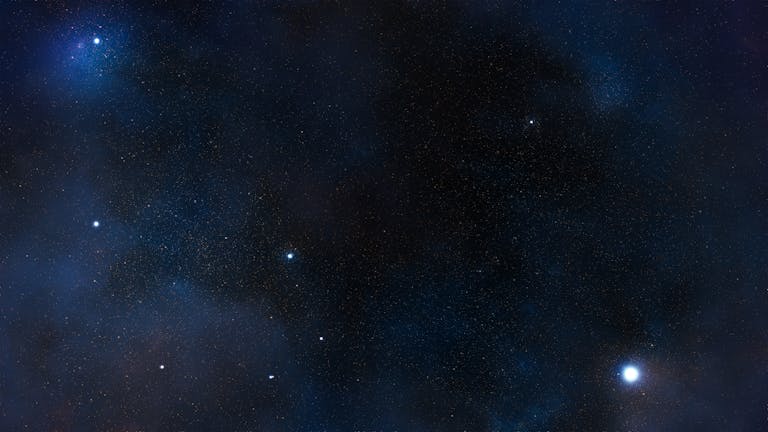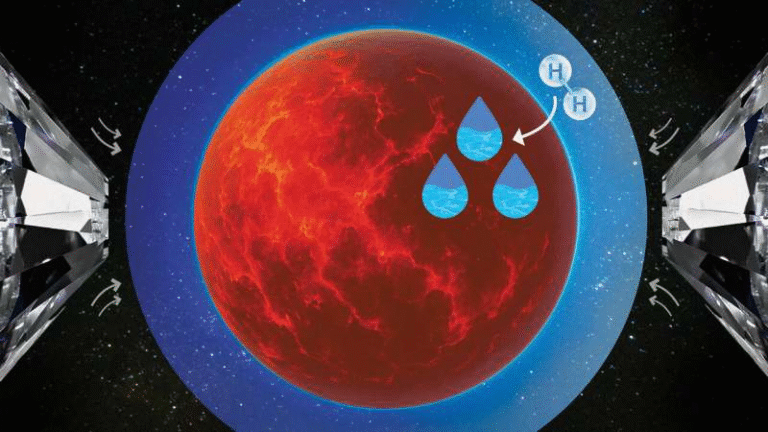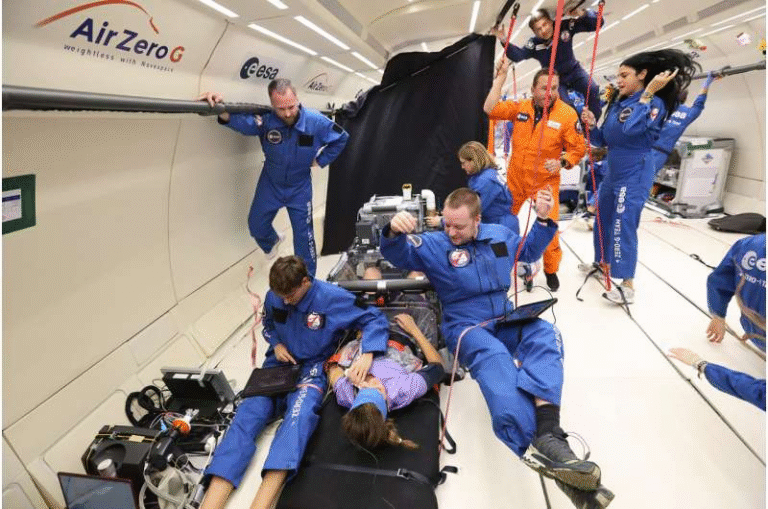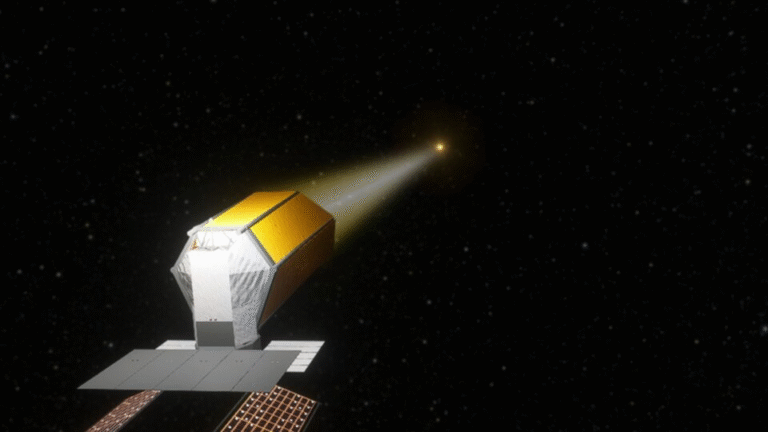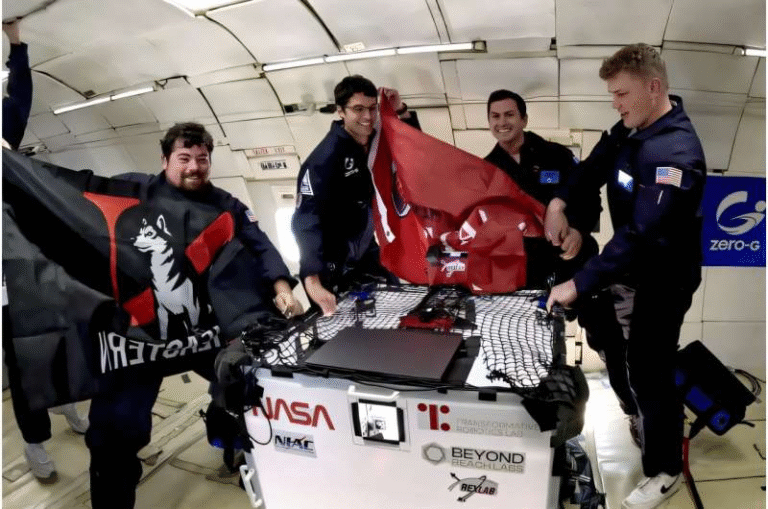Ariel: Uranus’ Mysterious Moon That May Have Hidden a 100-Mile-Deep Ocean Beneath Its Surface

Scientists have uncovered fascinating new evidence suggesting that Ariel, one of Uranus’ moons, might have once harbored a massive subsurface ocean—possibly around 100 miles (170 kilometers) deep beneath its icy crust. This finding comes from a detailed study published in the journal Icarus, and it adds a surprising twist to our understanding of the Uranian system and the potential for ocean worlds in the outer reaches of our Solar System.
The research, conducted by a team from the Planetary Science Institute (PSI), the Johns Hopkins University Applied Physics Laboratory, and the University of North Dakota, used advanced tidal stress modeling to interpret surface features seen on Ariel. These include fractures, ridges, and troughs—geological scars that point to a once dynamic and possibly watery interior.
Ariel: The Bright and Battered Moon of Uranus
Ariel is Uranus’ brightest and second-closest major moon, measuring roughly 720 miles (1,159 kilometers) across. That’s about the distance between Tucson, Arizona, and Salt Lake City, Utah. Among the five large moons of Uranus—Miranda, Ariel, Umbriel, Titania, and Oberon—Ariel stands out because of its intriguing blend of ancient, cratered terrain and younger, smoother regions that suggest past geological activity.
This complex landscape includes faults, ridges, and grabens—large, sunken sections of crust that resemble tectonic rifts on Earth. These features aren’t random; they appear in patterns and orientations that hint at stresses acting over time on Ariel’s surface. The PSI team wanted to figure out what internal and orbital processes could have created them.
By analyzing high-resolution images taken by Voyager 2 back in 1986—the only spacecraft to ever visit Uranus—they mapped Ariel’s southern hemisphere and fed this data into computer simulations to model the moon’s tidal stresses. Essentially, they asked: what kind of internal structure and orbital motion could stretch, crack, and reshape Ariel the way we see it today?
Modeling a Hidden Ocean World
The researchers simulated how Ariel would deform as it orbited Uranus. Just like Earth’s Moon causes tides on our planet, Uranus exerts powerful gravitational pulls on its moons. These forces can flex and heat a moon’s interior, especially if its orbit is slightly elliptical rather than perfectly circular. As Ariel moves closer and farther from Uranus during its orbit, it would distort from a nearly spherical shape to a slightly elongated one—repeatedly squeezing and stretching.
The team found that to produce the fractures and ridges visible on Ariel, its orbit must once have had an eccentricity of about 0.04—around 40 times greater than it is today. Although this number sounds small, even a modest increase can dramatically intensify tidal heating and stress. For comparison, Europa, Jupiter’s ocean-bearing moon, experiences constant surface cracking from tidal forces—but Ariel’s past eccentricity would have made its tidal stresses roughly four times stronger than Europa’s are now.
This leads to a crucial conclusion: such intense stresses could not have fractured Ariel’s surface unless liquid water existed beneath its ice shell. The models indicate that Ariel likely had a thin icy crust overlying a massive liquid layer—an ocean extending up to 100 miles deep.
What Happened to the Ocean?
If Ariel once had a deep ocean, what became of it? The researchers believe that over billions of years, as the moon’s orbit stabilized and its eccentricity decreased, the tidal heating diminished. Without enough internal warmth, the subsurface ocean would have gradually frozen, forming a thicker ice shell and leaving behind the geological evidence we see now.
Interestingly, Ariel’s surface still contains ammonia compounds—molecules that break down quickly under radiation. Their presence suggests they were recently resurfaced or pushed up from within, hinting that some degree of internal activity may still persist today. Since ammonia also lowers water’s freezing point, it could have helped Ariel’s ocean remain liquid for longer than expected, even in the frigid Uranian system where sunlight is faint.
Comparing Ariel to Its Neighbors
This study is actually the second in a series of investigations exploring whether Uranus’ moons once hosted subsurface oceans. The same research team previously analyzed Miranda, another Uranian moon, and found similar signs of ancient oceanic activity. Together, these findings suggest that the Uranus system might once have contained multiple ocean worlds—a remarkable idea considering how far these moons lie from the Sun.
Only the southern hemispheres of Ariel and Miranda were imaged by Voyager 2, so scientists still lack data on their northern halves. The new modeling work allows researchers to predict where unseen fractures, ridges, and cryovolcanic plains might be located in those unobserved regions. These predictions will be invaluable when a future spacecraft eventually returns to Uranus.
Why This Matters: Expanding the Definition of Ocean Worlds
When we think of ocean worlds, moons like Europa (Jupiter) and Enceladus (Saturn) often come to mind. These icy moons are well-known for their subsurface seas of liquid water, sustained by tidal heating and containing the basic ingredients for potential life. The possibility that Ariel and Miranda might have once shared similar traits broadens our view of where oceans—and possibly habitable environments—might exist.
Water, as far as we know, is essential for life. If Ariel once held a deep, warm ocean beneath its icy crust, even temporarily, it might have been a habitable environment, at least in a chemical sense. And even if life never took hold there, studying how such oceans form and evolve can reveal much about the thermal and geological histories of icy worlds throughout the outer Solar System.
How the Research Was Done
The authors—Caleb Strom, Tom A. Nordheim, D. Alex Patthoff, and Sherry K. Fieber-Beyer—used a combination of surface mapping and tidal stress analysis to make their conclusions. They employed computational tools to simulate how stresses would distribute across Ariel’s crust, depending on different internal structures and orbital parameters. These simulations included factors such as ice shell thickness, viscosity, presence of an internal ocean, and orbital shape.
By comparing the modeled stress patterns to the actual fracture maps seen in Voyager images, they were able to infer which internal configurations best matched reality. The best fits corresponded to a moon that had an ocean layer deep beneath its icy exterior—possibly hundreds of kilometers thick.
The study also took into account orbital resonance interactions. In its early history, Ariel may have passed through resonances with nearby moons like Umbriel or Miranda, which would have temporarily increased its orbital eccentricity and produced the necessary internal heating to sustain a liquid ocean.
Why We Need to Go Back to Uranus
Despite these compelling results, scientists remain cautious. The data come from nearly 40-year-old Voyager 2 images, and only about half of Ariel’s surface has been mapped in detail. A dedicated Uranus orbiter mission—similar to NASA’s planned Europa Clipper or Dragonfly missions—could completely change our understanding of this mysterious system.
Such a mission could use instruments like ice-penetrating radar, infrared spectrometers, and magnetometers to directly test for subsurface oceans, measure their thickness, and confirm whether Ariel’s crust still flexes under Uranus’ pull. These observations could even reveal whether Ariel retains pockets of liquid water today.
With increasing interest from planetary scientists and mission planners, Uranus has become one of the top targets for future exploration in the 2030s and 2040s. Ariel—and its siblings—might hold the key to understanding not just Uranus, but the formation of icy moons throughout the Solar System.
The Bigger Picture: How Common Are Subsurface Oceans?
In recent years, the idea of “ocean worlds” has revolutionized planetary science. We now know that liquid water may exist under the frozen shells of several moons—even those far from the Sun. These include Europa, Ganymede, Callisto, Titan, Enceladus, and possibly Triton, Neptune’s captured moon. Ariel could join this fascinating list.
These hidden oceans are sustained by tidal heating, radioactive decay, or chemical interactions within their cores. They are important because they might represent habitats for life beyond Earth. Even if frozen today, Ariel’s geological record preserves clues to how such environments emerge and evolve.
By studying Ariel’s fractures, ridges, and plains, scientists are essentially reading the moon’s frozen diary—one that documents a time when an icy body far from the Sun may have contained a deep, dynamic ocean.
Key Takeaways
- Ariel, Uranus’ fourth-largest moon, may once have hosted a 170-kilometer-deep ocean beneath its icy crust.
- The conclusion is based on tidal stress modeling that explains Ariel’s surface fractures and ridges.
- Ariel’s past orbital eccentricity (~0.04) could have created powerful tidal heating—much stronger than Europa’s.
- The study suggests a thin ice shell over a large liquid layer, consistent with observed surface deformation.
- Evidence of ammonia compounds supports the idea of internal activity and cryovolcanic resurfacing.
- This research complements earlier findings on Uranus’ moon Miranda, hinting at multiple ancient ocean worlds in the Uranian system.
- Only Ariel’s southern hemisphere has been imaged, leaving much of its surface—and its history—still to be discovered.
- Future missions to Uranus could confirm the presence (or remnants) of this long-lost ocean and reveal how common such environments are in our cosmic neighborhood.
Reference:
Strom, C., Nordheim, T. A., Patthoff, D. A., & Fieber-Beyer, S. K. (2025). Constraining ocean and ice shell thickness on Ariel from surface geologic structures and stress mapping. Icarus, 422, 116822. https://doi.org/10.1016/j.icarus.2025.116822

